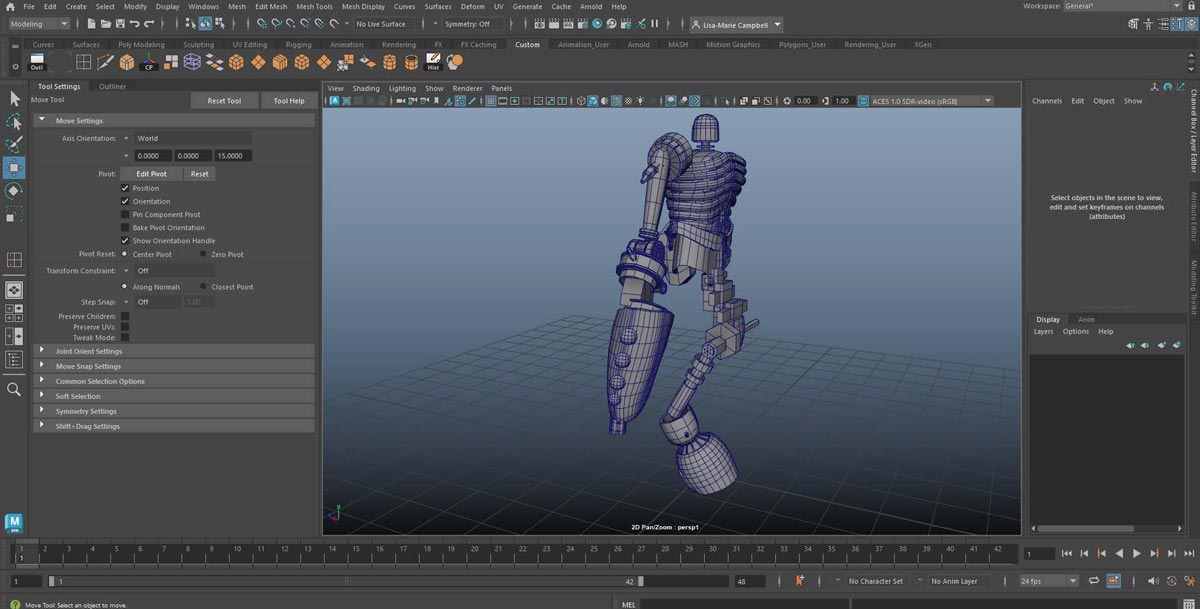 Image: Lisa-Marie C., (VANAS)
Image: Lisa-Marie C., (VANAS)
How To Improve as a 3D Artist
Enhancing Your Skills
Aspiring 3D artists often find themselves on a journey of continuous improvement, seeking to refine their craft and elevate their skills to new heights.
Whether you're just starting out or looking to take your abilities to the next level, this article will provide you with practical tips, valuable resources, and actionable strategies to help you thrive in the dynamic world of 3D art.
Embrace Lifelong Learning
1. Master the Fundamentals:
Before diving into advanced techniques, it's essential to build a strong foundation in the basics of 3D art.
Familiarize yourself with concepts such as modeling, texturing, lighting, and rendering. Invest time in studying anatomy, perspective, and color theory, as these principles will serve as the building blocks of your artistic journey.
2. Practice Regularly:
Like any skill, proficiency in 3D art requires consistent practice. Set aside dedicated time each day to work on personal projects, experiment with new tools and techniques, and explore different styles and genres.
Embrace the process of trial and error, and don't be afraid to make mistakes – they're essential stepping stones on the path to improvement.
3. Seek Feedback:
Feedback from peers and professionals can provide valuable insights and perspectives on your work. Join online communities, forums, and social media groups dedicated to 3D art, where you can share your creations, ask for feedback, and learn from others.
Be open to constructive criticism and use it as a catalyst for growth and refinement.
Expand Your Skill Set
1. Explore Specialized Areas:
As you progress in your journey as a 3D artist, consider exploring specialized areas within the field, such as character design, environment modeling, visual effects, or architectural visualization.
Identify your interests and strengths, and focus on developing expertise in those areas through focused practice and study.
2. Learn New Tools and Software:
Stay up-to-date with the latest tools and software used in the industry. Experiment with different programs such as Blender, Maya, 3ds Max, ZBrush, Substance Painter, and Photoshop to discover which ones best suit your workflow and objectives.
Take advantage of online tutorials, courses, and documentation to master these tools and expand your technical proficiency.
3. Collaborate with Others:
Collaboration with fellow artists, designers, and developers can provide valuable opportunities for learning and growth.
Participate in group projects, art challenges, and collaborative workshops to exchange ideas, share knowledge, and gain exposure to different perspectives and techniques.
Cultivate a Growth Mindset
1. Stay Inspired:
Draw inspiration from a variety of sources, including art books, films, video games, nature, and everyday life. Explore different artistic styles, cultures, and time periods to broaden your creative horizons and spark new ideas. Surround yourself with art that motivates and energizes you, and use it as fuel for your own creative endeavors.
2. Embrace Failure:
Failure is an inevitable part of the creative process, and it's essential to embrace it as an opportunity for learning and improvement. Don't be discouraged by setbacks or obstacles; instead, use them as stepping stones to propel yourself forward. Celebrate your successes, but also acknowledge and learn from your failures, as they hold valuable lessons and insights.
3. Stay Curious:
Maintain a sense of curiosity and wonder about the world around you. Stay curious about new techniques, trends, and technologies in the field of 3D art, and be proactive in seeking out opportunities for growth and exploration. Never stop asking questions, experimenting, and pushing the boundaries of your creativity.
Frequently Asked Questions
How can I improve my skills as a 3D artist?
Improving as a 3D artist requires dedication, practice, and a willingness to continuously learn and grow. Focus on mastering the fundamentals, exploring specialized areas, and cultivating a growth mindset. Seek feedback from peers, experiment with new tools and techniques, and stay inspired by surrounding yourself with art that motivates you.
What software do I need to learn as a 3D artist?
The choice of software depends on your specific interests and objectives within the field of 3D art. Some popular software programs used by 3D artists include Blender, Maya, 3ds Max, ZBrush, Substance Painter, and Photoshop. Explore different programs to find the ones that best suit your workflow and goals, and invest time in mastering their features and capabilities.
Does VANAS Online Animation School offer programs for aspiring 3D artists?
Yes, VANAS Online Animation School offers comprehensive programs in 3D computer animation, designed to equip students with the knowledge, skills, and techniques needed to succeed in the industry.
From introductory courses to advanced specialization tracks, VANAS provides hands-on training and personalized support to help you unleash your creative potential and pursue your passion for 3D art.
Conclusion
Becoming a proficient 3D artist is a journey that requires dedication, perseverance, and a commitment to lifelong learning.
By practicing the fundamentals, expanding your skill set, cultivating a growth mindset, and seeking out opportunities for collaboration, you can improve your potential and create better works of 3D art.
Remember, the key to improvement lies not only in talent or innate ability, but in the willingness to embrace challenges, learn from failures, and push the boundaries of your creativity. So, embrace the journey, stay curious, and never stop striving for excellence in your pursuit of artistic mastery.







